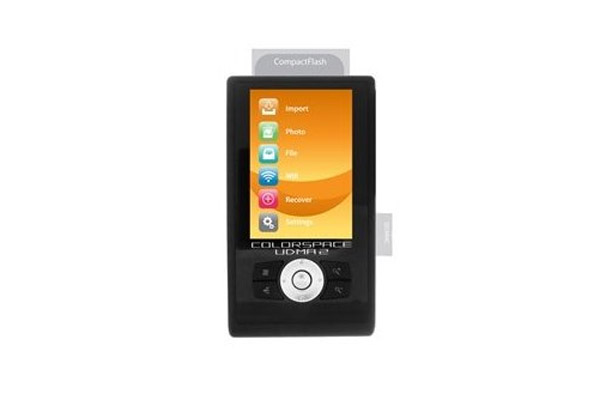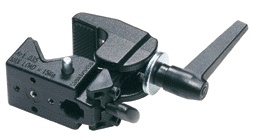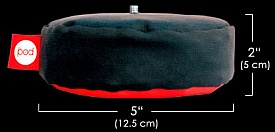I’ve written about metering before but I thought I’d recap an important point about the light meter in your camera: it’s a stupid, stupid device. Which isn’t to say that it’s useless. Far from it. Your camera’s light meter is an extremely useful tool. But, you have to know when you can trust it and when you can’t.
Category: Cameras & Equipment
Vibration reduction/image stabilization video demonstration
Camera shake is the bane of photographers everywhere. No photographer has perfectly steady hands. Once shutter speeds drop, camera shake begins to seriously affect image sharpness. Fortunately, there are solutions. Nothing will give you consistently sharper photos than a sturdy tripod and every photographer should have one. But there’s a high-tech solution, too: image stabilization. Read on to learn a little about this interesting technology and view a through-the-lens video demonstration of it in action.
… Continue reading Vibration reduction/image stabilization video demonstration
Review: Rentglass.com lens rental service
Many professional photographers rent lenses. Rather than spending huge sums on lenses (or other equipment), they rent just what they need for the job at hand. Sounds good, right? But not everyone has a decent camera shop nearby with rental service. In fact, I’d wager that you could only find lens rentals in large metro areas. Rentglass.com, an online lens rental company operating out of Florida, solves that issue by delivering lenses directly to you and at a price often cheaper than bricks and mortar stores.
… Continue reading Review: Rentglass.com lens rental service
RAW vs. JPG: Myths and misconceptions
Most digital cameras record JPG images because the JPG format provides a very high degree of fidelity for photographs in a very small amount of space. JPGs are high quality, small, can be viewed quickly and easily on any computer, and look great when printed. But JPGs, like all image formats, also have some limitations. RAW is another image format that addresses some of JPGs problems. But no format is perfect and RAW images have problems of their own.
Portable Photo Storage Review
Storing your photos may not seem a big problem, unless you decide for a long travel with your photo camera. While modern memory cards can hold thousands of JPG files, having the same amount of RAW data may put you in trouble.
Of course, you can take a laptop with you, but for a number of situations it may appear too large and heavy. One of the solutions is a portable storage device, which is independent. In other words, one that does not require a computer to transfer data to it.
A really interesting solution is a Sanho HyperDrive COLORSPACE UDMA 2 Multimedia Storage

The amazing Bogen Super Clamp
 The Bogen Super Clamp (Bogen Imaging) is a neat little piece of hardware. This simple looking device can attach itself solidly to almost any object with a width between 0.5 and 2.1 inches (1.3-5.3 cm). That includes shelves, tripod legs, light stands, doors, poles, fences, tree branches—or in my case, the neck of my daughter’s two-wheeled scooter. That’s right, Photodoto’s new unofficial slogan is, “Doing nutty stuff with expensive camera equipment so you don’t have to.”
The Bogen Super Clamp (Bogen Imaging) is a neat little piece of hardware. This simple looking device can attach itself solidly to almost any object with a width between 0.5 and 2.1 inches (1.3-5.3 cm). That includes shelves, tripod legs, light stands, doors, poles, fences, tree branches—or in my case, the neck of my daughter’s two-wheeled scooter. That’s right, Photodoto’s new unofficial slogan is, “Doing nutty stuff with expensive camera equipment so you don’t have to.”
Review of The Pod camera platform
 The Pod is essentially a fancy-pants version of the classic “beanbag tripod,” a device that photographers have been using for years as a makeshift tripod. The Pod people claim that The Pod “takes the shake out” and is a “breakthrough in effortless camera set-up.” Continue reading my review to find out what I thought of it and to have a shot at winning your own Pod.
The Pod is essentially a fancy-pants version of the classic “beanbag tripod,” a device that photographers have been using for years as a makeshift tripod. The Pod people claim that The Pod “takes the shake out” and is a “breakthrough in effortless camera set-up.” Continue reading my review to find out what I thought of it and to have a shot at winning your own Pod.
Quick photography hack: Softening your built-in flash
An external flash unit with an adjustable head is a great addition to any photography kit. With it you can bounce the light off the ceiling or a wall nearby or even use it off the camera to soften and change the light and reduce red eye. But compact camera owners are usually stuck with the built-in flash which is fixed in position next to the lens. Here’s a quick tip to help soften that built-in flash: try holding a piece of semi-transparent paper or white plastic (like from a milk jug) in front of the flash. It will act as a makeshift diffuser and help soften the light hitting your subject.
… Continue reading Quick photography hack: Softening your built-in flash
Kodak knows how old you are
I don’t normally cover news items but I thought this one was particularly interesting. Kodak has a patent on a technology that can determine a person’s age by measuring the red-eye in a photograph. Finally, a use for red-eye other than making people look like demons. Just think, in the future, instead of asking people how old they are, businesses of all kinds may just flash you in the face with a camera. A possible use outlined in Kodak’s patent is to be able to sell people age-appropriate advertising with their photo prints. [via DailyTech]
Did you know? Cameras are made for right-handed people.
Right-handed people like myself may have never even thought about what it’s like for a left-handed person to use a camera. But look around. When was the last time you saw a camera with the shutter button on the left? Most of the controls are on the right side. Think about what it would be like. Imagine cradling the camera and lens with the other hand. It’s awkward just to think about it. And yet, for left-handed folks, it’s a fact of life.
… Continue reading Did you know? Cameras are made for right-handed people.
to start
making profit!








